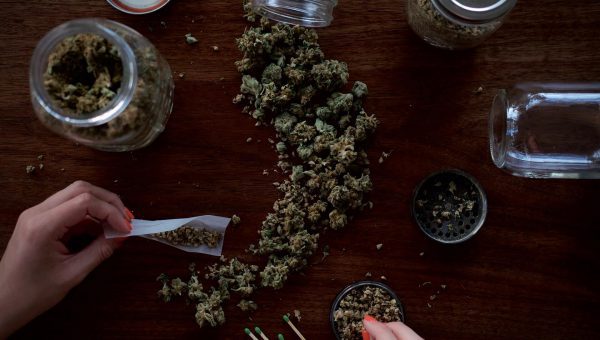If you’re new to growing weed, for sure, you’re eager to taste the fruits of your hard work at harvest time. However, harvesting your cannabis is about proper timing. If you collect them too early, they won’t be at the peak of their potency. But harvesting them too late can lead to overripe buds, increasing the risks of rotting and self-pollination.
In this guide, you’ll learn the best time to harvest buds, how to tell you when your plants are ready to harvest, what to do with overripe buds, and much more.
What are the basics of marijuana harvesting?
Collecting buds is a bit like harvesting grapes and other fruits. The longer you wait, the more potent the grape is and the higher its alcohol content when it turns to wine. With marijuana, the longer you wait, the more THC and CBD it will have, which means a more potent bud.
From the seedling phase until the crop is harvest-ready, marijuana plants have a range of growth periods. The length of their growth cycle depends on several factors, such as the growing medium and strain. They can affect the harvest time, meaning you may have to wait between 6 to 16 weeks to harvest most cannabis plants.
On average, though, you can expect to wait around 9 to 12 weeks for the buds to mature. Again, the right timing is dependent on different factors.
What are the signs your buds are ready to harvest?
As a grower, you’ll know that your cannabis plant is ready to be harvested if you see the following signs:
Flowering time
First, you should know the expected flowering time of your strain. You can find online posts from other growers cultivating the same strain as you, and you can read their reviews about when the right time to harvest is.
But as a general rule, the flowering times and therefore the harvest times depend on what type of strain your plant is.
- Indica: You can harvest after 8 to 10 weeks of flowering.
- Sativa: You can harvest after 12 to 14 weeks of flowering.
- Autoflower: It matures around 10 to 12 weeks from seed germination.
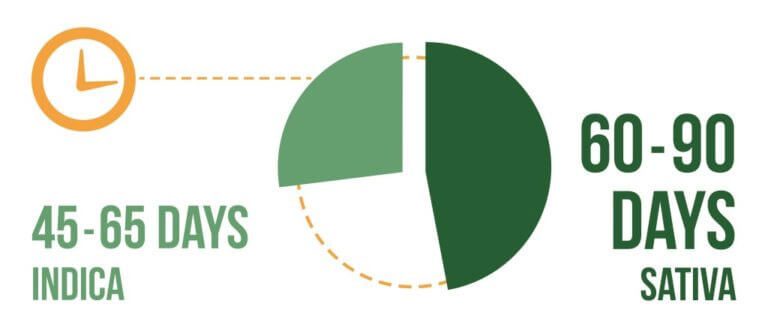
Trichome color
The appearance of the trichomes is one of the surest ways to tell if it’s the right time to harvest. Half of the trichomes should appear milky white, while the others should be vivid amber. Clear trichomes indicate that it’s still too early to harvest, whereas all amber trichomes mean overripe buds.
The color change of the trichomes might be hard to notice and see with the naked eye, so make sure you have a magnifying tool ready.
Keep in mind that the color of the trichomes can affect their THC content. Clear trichomes will have a clearer high, whereas trichomes that are 30 to 40% amber will mean a more couch-lock feel with an Indica-dom strain and a diminished cerebral buzz for Sativa.
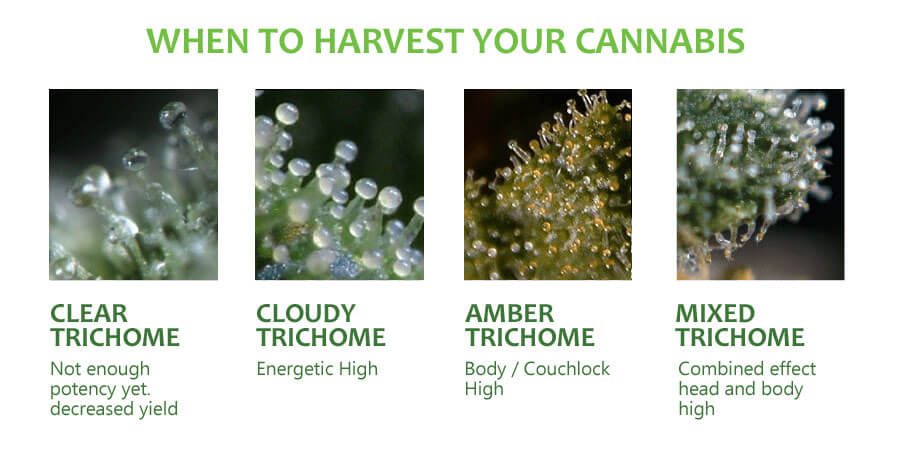
Leaf color
Another reliable indicator that your cannabis plant is ready to harvest is the color of the leaves. Nitrogen is responsible for their green shade, but as the plant matures, the fan leaves will turn yellow and fall off because the nitrogen content decreases.
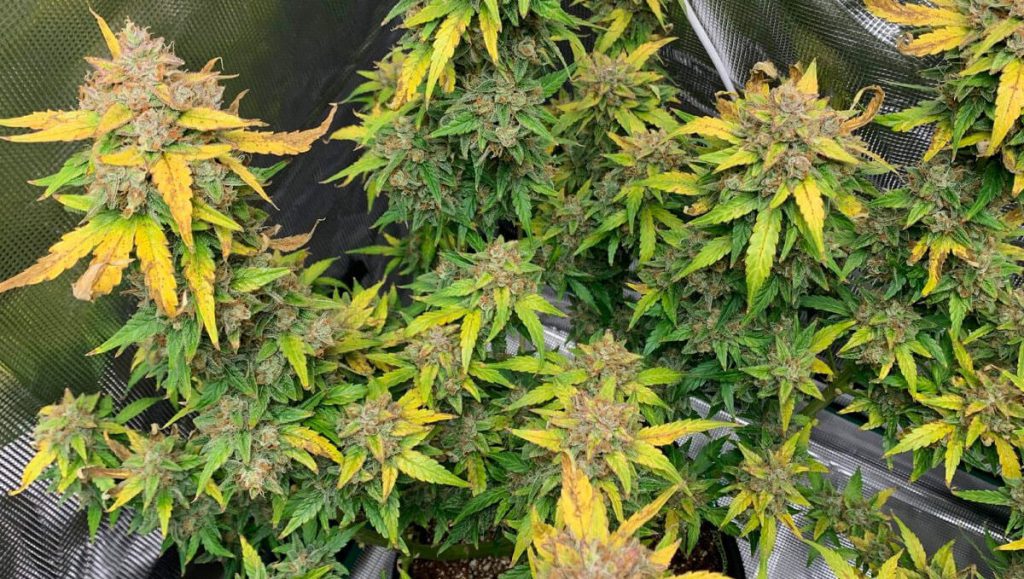
Curling leaves
As the fan leaves change from green to yellow, they may also curl and become dry. This is caused by a loss of moisture that’s a natural occurrence, as cannabis plants absorb less water when harvest time draws near.
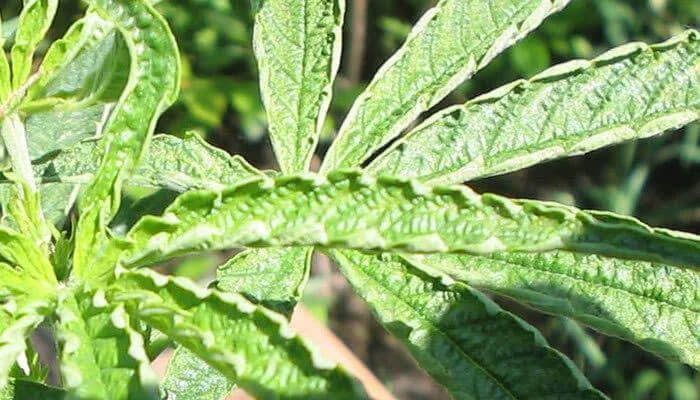
Bud shape
Though it’s not the most reliable way of knowing if it’s time to harvest, the shape of the bud can still give a few hints. If the buds are still firm and tight on the marijuana plant, it’s a good sign that you should gather them soon. You shouldn’t wait too long or less they’ll be overripe.
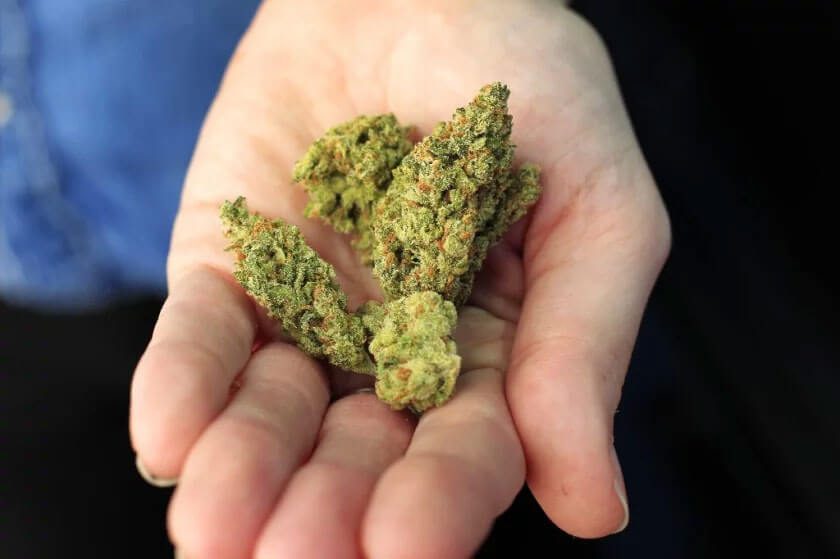
Pistil color
For photoperiodic marijuana plants, the pistils will turn brown as they mature. The optimal time to harvest is when half of the pistils turn brown. Just like when you’re checking for trichome colors, you may want to use a magnifying glass for this step.
Here’s what to look for:
- Mostly white: Still too young to harvest
- 50 to 70% brown: Not ready for harvest
- 70 to 90% brown: The plant is ripe and heavy, the ideal time to harvest
- 90 to 100% brown: Harvest now, before it’s too late
Note: Pistils could also change color due to environmental conditions, like higher humidity in the air or moisture on the plants.
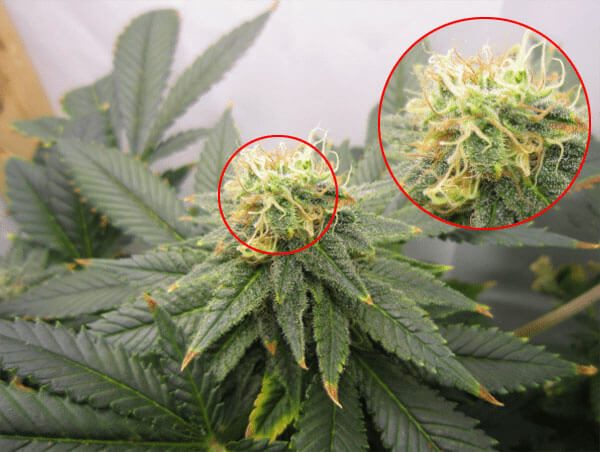
What can cause premature bud drop?
Bud drop and bud blast are terms used to describe blooms that have prematurely aborted before or immediately after opening. They develop to a certain point, stop growing, and just fall off the plant.
The good news is that the most common factors involved in premature bud drop are due to external factors that can easily be diagnosed and managed.
Extreme temperatures
When the temperature fluctuates or when it’s too hot in the summer or too cold in the winter, the plant gets stressed. As a response, it drops its buds and flowers in an attempt to conserve energy.
But there are many solutions to this problem. For example, you can install shade nets to protect the plant from too much sun. You can also use a thin cloth to filter the sunlight if you don’t have a net. Furthermore, you can move your plant indoors during periods of extreme weather.
Improper watering
Both overwatering and underwatering can cause stress. Underwatering will make the plants redirect water from enlarging the buds, resulting in shrinkage. On the other hand, overwatering can lead to root rot or other fungal infections that can destroy the developing flowers.
The solution to this problem is to always water the plants at the right time and with a suitable amount. You can use the finger method, which is to stick your index finger 1 to 2 inches below the soil’s surface. If the soil is still moist, put off watering, but if it’s dry, it’s time to water.
Lack of nutrients
Nutrient deficiency is a common problem that can be due to a deficiency of major nutrients, namely nitrogen (N), phosphorus (P), and potassium (K). Feeding your plant with the correct N-P-K levels can solve the issue.
To supply your plants with the proper nutrients, you can use this fertilizer solution.
Pest attacks
Insects such as aphids can cluster on the buds and cause damage to the developing flowers or fruits. Most of these pests are visible and can be controlled by spraying a pesticide weekly. For organic gardening, you can use neem oil.
How do you tell if it’s too late to harvest cannabis?
Check the trichomes and note the color. If you see mostly amber trichomes, then the cannabis flowers are overripe. At this stage of development, you can expect that the harvested weed will have an unpleasant taste.
Moreover, the THC content will begin to degrade when amber trichomes overtake the milky white ones. In rare instances, the trichomes can even turn black if the grower doesn’t harvest on time. Aside from the amber color, the trichomes can also become brittle and crumble easily.
Collecting the buds past their prime isn’t recommended, but it may be preferable to harvesting prematurely. The plant’s terpenes, which are responsible for the buds’ aroma, taste, and therapeutic benefits, can become more potent during a late harvest.
What happens to the buds if they are harvested late?
A late harvest means your buds have passed their optimum point of potency. Many growers consider this a bad thing because of the degradation of THC. The terpenes can also begin to give off a fermented smell because they’ve become too pungent.
Overripe buds can induce a more narcotic and stoney high. For a Sativa strain, harvesting the buds late can result in effects similar to Indica-dominant strains instead of an energizing cerebral buzz. Though this might not be ideal for many smokers, a lot of medicinal users favor a more calming effect.
However, you should also be careful with late harvesting because some strains will start to self-pollinate.
How do you harvest buds?
Indoor harvesting
Start by removing the lamps from the grow room. Then, hang some wire from the ceiling. Cut the plant at its base, then secure it from the wire. Use a fan to direct air beneath the buds, keeping the humidity around 45% and the temperature at 64 degrees Fahrenheit. Make sure that the room is dark and the extractor fan is running.
Here are some other things you’ll need:
- Heavy-duty shears or scissors
- Gloves
You’ll need the shears to cut through thick plant matter. And it’s best to wear gloves when cutting, as it can get messy. After you cut your plants and hang them, the next step is to dry out the excess moisture. To learn the proper steps of drying weed, you can read our guide.
You don’t want to dry the plants too quickly, as it can cause some chlorophyll to remain, which can alter the taste of the weed. That’s why you need to keep the room dark and the temperature moderate.
Expect the drying process to last 10 to 14 days. Monitor your plant as they dry to ensure that there’s no mold growing.
Outdoor harvesting
Harvesting outdoors is just like you’re harvesting indoors, but careful planning is required to avoid serious mistakes. Aside from understanding the basics of harvesting, you also need to consider some variables.
If you’re an outdoor grower, you have to monitor the sun throughout your plant’s life. Doing so allows you to estimate how much energy the plant receives and for how long.
During the summer, your plant can receive as much as 14 hours of daily sunlight or more. In the northern hemisphere, it could be 15 hours of continuous sunshine in June. Then, around September, the amount of sunlight will decrease.
When summer shifts to fall in September, there will only be 12 or 13 hours of daylight. This loss of sunlight will cause the marijuana plant to change its energy focus to flowering instead of vegging.
Final Thoughts
Timing is always an important factor to consider when growing cannabis. The amount of time you allow it to mature has a great impact on its cannabinoid content and aroma. Therefore, it’s best to know the signs that your plant is ready to harvest.
